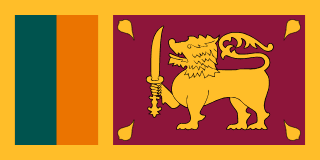Importing Used Cars from
Japan
to
Sri Lanka
Regulations and Procedures

Introduction:
So, you're considering bringing a Japanese car to Sri Lanka's roads? Great! But hold your horsepower; there's stuff you need to know. First off, your car can't be an old-timer; it's got to be a maximum of 3 years old. Ports of call? Either Colombo or Hambantota.
Your car needs to be a righty; Sri Lanka only rolls with right-hand drives. And you can't skip the exam; your car needs to pass a JAAI inspection in Japan before it hops on that ship.
Tax-wise, brace yourself. Duties can range from 5% to a whopping 35%, and don't forget about that 12% VAT. Crunch those numbers because every penny counts!
Document-wise, have everything from your Bill of Lading to your Import License ready. No shortcuts here; you need to do it by the book, literally.
Let's not forget about customs clearance. You're going to need a licensed agent for that, so pick wisely.
Importing used cars from Japan to Sri Lanka requires adherence to specific regulations and procedures. Understanding the process is essential to ensure a smooth importation experience while complying with legal requirements. This article provides comprehensive information on the factors to consider when importing a car from Japan to Sri Lanka, including age restrictions, import duties and taxes, required documentation, shipping and customs clearance, compliance and modifications, registration, and tips for a hassle-free experience.
Factors to Consider When Importing a Car from Japan to Sri Lanka :
Age Restriction and Vehicle Eligibility: Vehicles imported into Sri Lanka must be under 3 years old, while vans and dual-purpose vehicles must not exceed 4 years.
Import Fees: Import fees vary based on different factors. It is important to understand the cost implications before importing a car.
Right-hand Drive Vehicles: Only right-hand drive vehicles are permitted for importation into Sri Lanka.
The Importation Process :
Destination Ports: Strategic ports, such as the port of Hambantota and the port of Colombo, are commonly used for importing cars from Japan to Sri Lanka.
Shipment and Delivery: Reliable suppliers offer streamlined order processing and delivery services to minimize delays and complications.
Age Restriction and Vehicle Eligibility :
Sri Lanka Customs specifies age limits and vehicle specifications for different vehicle types. It is crucial to consult relevant gazette notifications for the latest information.
Import Duties and Taxes :
Valuation and Classification: Import duties and taxes are calculated based on the customs value of the imported vehicle. The customs value is determined by customs authorities.
Concessionary Permits: Certain categories of individuals, such as Sri Lankans employed overseas, may be eligible for concessionary permits with reduced import duties.
Required Documentation and Fees :
Pre Shipment Export Inspection Certificate: A "Pre Shipment Export Inspection Certificate" with an embossed hologram seal is necessary prior to import.
Documentation: The required documentation includes the original Bill of Lading, passport, import license, car purchase invoice, original registration certificate, approval from the Transport Ministry, and insurance certificate.
Fees: Importation involves certain fees, such as customs handling charges and inspection fees, which should be considered.
Shipping and Customs Clearance :
Port of Entry: The vehicle is transported to the port of Colombo or Hambantota, where customs clearance procedures take place.
Roadworthiness Inspection: A roadworthiness inspection conducted by JAAI is mandatory for imported cars to ensure compliance with safety and environmental standards.
Compliance and Modifications:
Compliance: Imported cars must meet Sri Lanka's safety and environmental standards to obtain approval for registration.
Modifications: In some cases, modifications may be required to ensure compliance. It is advisable to consult with relevant authorities for specific requirements.
Registration in Sri Lanka:
Registration Process: After customs clearance and compliance with regulations, the imported car can be registered with the Department of Motor Traffic in Sri Lanka.
Tips for a Hassle-free Importing Experience :
Research Reliable Suppliers: Choose a reputable supplier with positive customer feedback and reviews.
Verify Vehicle Authenticity: Thoroughly check the vehicle's details and request additional information or documentation if necessary.
Understand Warranty and After-sales Service: Inquire about warranty coverage and after-sales support for imported cars.
Seek Professional Assistance: Consider engaging the services of import agents or consultants who specialize in importing cars from Japan to Sri Lanka.
Conclusion:
Importing a car from Japan to Sri Lanka involves various factors, including age restrictions, import duties and taxes, documentation, shipping and customs clearance, compliance, and registration. Familiarizing oneself with the regulations and procedures is crucial for a hassle-free importing experience. By following the guidelines and tips mentioned in this article, individuals can navigate the process successfully and enjoy the benefits of importing cars from Japan to Sri Lanka.
